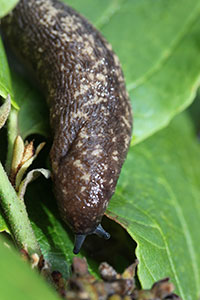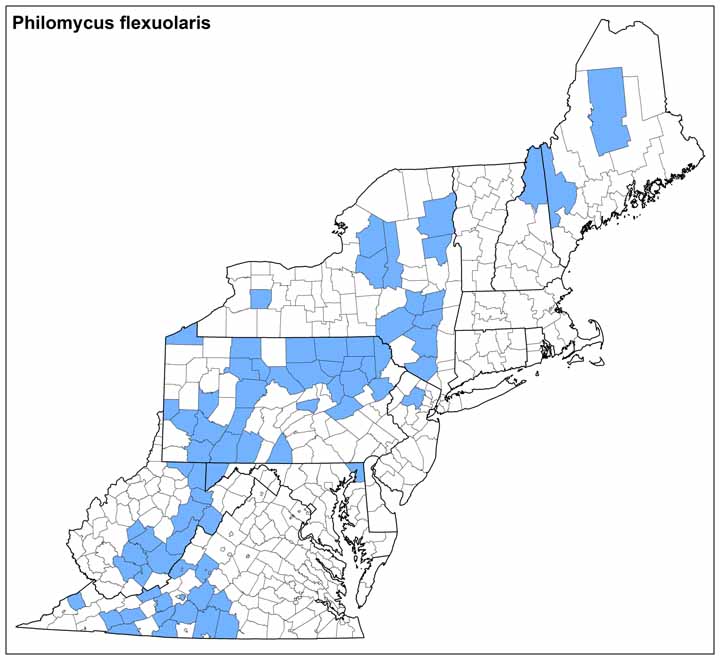Land Snails


Photo(s): Philomycus flexuolaris © Ken Hotopp.
Click photo(s) to enlarge.
Philomycus flexuolaris (Rafinesque, 1820)
Family: Philomycidae
Common name: Winding Mantleslug
Identification
Length: 50-100 mm
Philomycus flexuolaris is a large slug with a mantle that covers the entire dorsal surface. The mantle is tan to grey and usually mottled with large spots of darker brown. These spots often coalesce to form three indistinct bands, one central band and two bands running along each side of the mantle. The reproductive system is equipped with a dart sac containing a short wide dart.
Ecology
This species is common in upland hardwood forests up to about 1,500 meters (5,000 feet) in the Appalachian Mountains. They are often observed feeding on fungi and lichens at night and during wet weather, and they aestivate under loose bark and rotting logs. This species produces a pale yellow defense mucous when irritated.
During humid weather, Philomycus flexuolaris is often found on logs, snags, or tree trunks well above the ground, to 15m or more (Hotopp, pers obs). Red Maple, American Beech, and other smooth-barked trees often bear slug “feeding tracks” – lighter-colored traces upon the gray algae that coat tree bark.
Distribution
Philomycus flexuolaris is distributed from Quebec to northeastern Georgia. In Virginia the species is primarily found in the Ridge and Valley region of the extreme southwestern part of the state.
Conservation
NatureServe Global Rank: G5
NatureServe State Rank: S4
John Slapcinsky, Ken Hotopp 10/2012
Range Map (click to enlarge)


